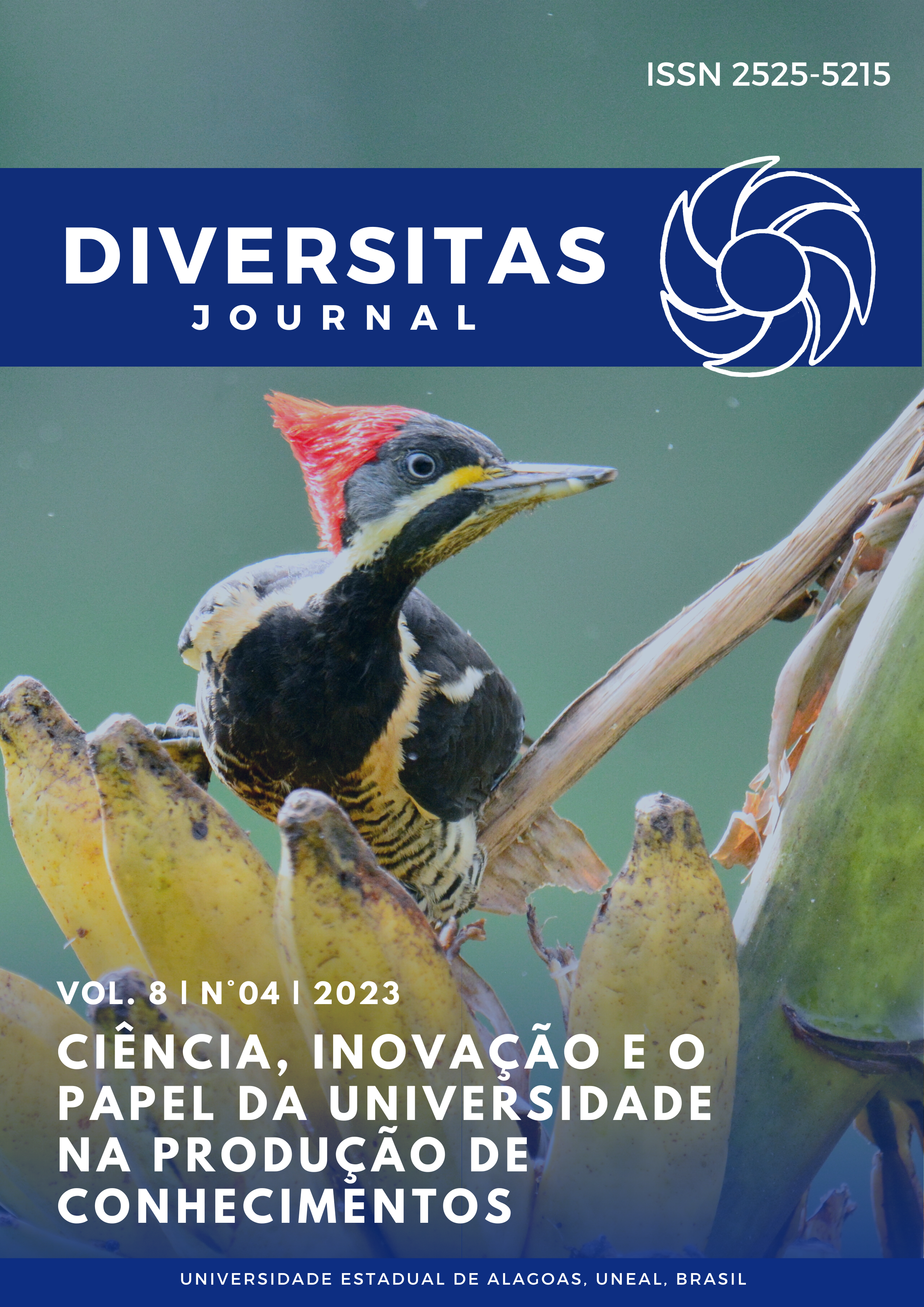Prueba y evaluación del horno de tostado de biomasa con Pili Shell
DOI:
https://doi.org/10.48017/dj.v8i4.2643Palabras clave:
Biomass roasting furnace, Pili shell, Roasting meat, Biomass fuelResumen
En este estudio se investigó el uso de cáscaras de pili como combustible en un horno de asado de biomasa para asar carne. Para estimar la capacidad de las conchas pili para asar carne, los investigadores utilizaron la observación, la experimentación, el análisis de datos y la interpretación. Se descubrió que las cáscaras de pili como combustible eran un buen sustituto del tostado. Las conchas pili son más efectivas que un horno eléctrico, según los investigadores. Se necesita más investigación sobre las cualidades y los componentes de las cáscaras de pili para establecer el tratamiento requerido antes de que puedan utilizarse como combustible. El aumento de la presión tiene un efecto en las métricas de torrefacción, como los rendimientos másicos, la relación de densificación de energía, el rendimiento energético, el consumo de energía del proceso, el análisis próximo y el alto poder calorífico.
Métricas
Citas
Ahmad, R., Ilyas, H. N., Li, B., Sultan, M., Amjad, M., Aleem, M., Abbas, A., Imran, M. A., & Riaz, F. (2022, August 12). Current challenges and future prospect of biomass cooking and heating stoves in Asian countries. Frontiers. https://www.frontiersin.org/articles/10.3389/fenrg.2022.880064/full
Biomass fuels. (n.d.). https://enva.com/resource-recovery/energy/biomass-fuels
Boy et al. (2020). Fuel efficiency of an improved wood-burning stove in rural Guatemala: implications for health, environment and development. Energy Procedia
C. L'Orange et al. (2022). Influence of stove type and cooking pot temperature on particulate matter emissions from biomass cook stove
Enerpower. (2012, June 12). Biomass Explained. Enerpower. https://enerpower.ie/2012/06/12/biomass-explained/
Huboyo et al. (2021). Comparison between Jatrophacurcas seed stove and woodstove: performance and effect on indoor air quality
MacCarty et al. (2018). A laboratory comparison of the global warming impact of five major types of biomass cooking stoves
N. MacCarty et al. (2020). Fuel use and emissions performance of fifty cooking stoves in the laboratory and related benchmarks of performance
N. L. Panwar et al. (2018). Design and performance evaluation of a 5 kW producer gas stove. Biomass Bioenergy
Nonrenewableresources.(n.d.-b). https://education.nationalgeographic.org/resource/nonrenewable-resources/
Okino, J., Komakech, A. J., Wanyama, J., Ssegane, H., Olomo, E., & Omara, T. (2021, May 29). Performance characteristics of a cooking stove improved with sawdust as an insulation material. Journal of Renewable Energy. https://www.hindawi.com/journals/jre/2021/9969806/
Pham, L., & Dumandan, N. (2015). Philippine Pili: Composition of the lipid molecular species - researchgate. ResearchGate. https://www.researchgate.net/publication/285215963_Philippine_Pili_Composition_of_the_lipid_molecular_species
Still, K. (2022, May 7). Learning from the Three Stone Fire. Aprovecho. http://aprovecho.org/the-big-picture/learning-from-the-three-stone-fire/
Torretta, V., Mendoza, I. J. C., Portillo, M. a. G., & Conti, F. (2022). Are waste-based briquettes alternative fuels in developing countries? A critical review. Energy for Sustainable Development, 68, 220–241. https://doi.org/10.1016/j.esd.2022.03.013
V.M. Berrueta et al.(2018). Energy performance of wood-burning cook stoves in Michoacon, Mexico Renew.Energy
VNV. (2023, March 9). Cookstoves: An eco-friendly solution for sustainable cooking. VNV Advisory. https://vnvadvisory.com/cookstoves-an-eco-friendly-solution-for-sustainable-cooking/
Wikipedia contributors. (2023). Clay. Wikipedia.https://en.wikipedia.org/wiki/Clay Sriudom (2021). Thermal efficiency improvement and technology transfer of chimney stove for producing stove; Amphoe Bo Kluea, Nan Province
Yao, M. G. (2012). Pili (Canarium Ovatum Engl.) Nut Shell activated carbon: Surface modification, characterization and application for carbon dioxide capture. Animo
Zafar, S. (2021, December 14). Biomass Energy Potential in Philippines. BioEnergy Consult. https://www.bioenergyconsult.com/biomass-philippines/
Descargas
Publicado
Cómo citar
Número
Sección
Licencia
Derechos de autor 2023 Jeffrey Cacho, Sherwin Reyes, Miguel Ramalho Santos, Joefil Jocson, Estrelita Bernardo

Esta obra está bajo una licencia internacional Creative Commons Atribución 4.0.
O periodico Diversitas Journal expressa que os artigos são de unica responsabilidade dos Autores, conhecedores da legislação Brasileira e internacional. Os artigos são revisados pelos pares e devem ter o cuidado de avisar da possível incidencia de plagiarismo. Contudo o plagio é uma ação incontestavel dos autores. A Diversitas Journal não publicará artigos com indicios de Plagiarismos. Artigos com plagios serão tratados em conformidade com os procedimentos de plagiarismo COPE.
A violação dos direitos autorais constitui crime, previsto no artigo 184, do Código Penal Brasileiro:
“Art. 184 Violar direitos de autor e os que lhe são conexos: Pena – detenção, de 3 (três) meses a 1 (um) ano, ou multa. § 1o Se a violação consistir em reprodução total ou parcial, com intuito de lucro direto ou indireto, por qualquer meio ou processo, de obra intelectual, interpretação, execução ou fonograma, sem autorização expressa do autor, do artista intérprete ou executante, do produtor, conforme o caso, ou de quem os represente: Pena – reclusão, de 2 (dois) a 4 (quatro) anos, e multa.”


















